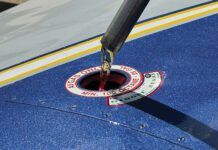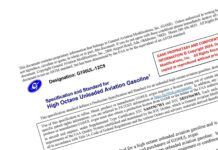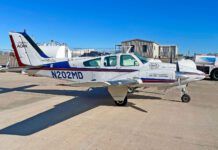To visit Lycoming and Continental, as we did last month, is to step into a disconnected world that almost qualifies as an alternate reality. And no, were not resurrecting the hackneyed complaint that the engine companies are out of touch with the wants and needs of their customers. Its the other way around. While the world of piston GA drifts along in business-as-usual mode, the engine makers see a looming cliff defined by the extinction of 100LL and no one is tapping the brakes. Panic may be too strong, but if no universal fuel replacement emerges two years from now, it may be too mild. Well frame it this way: Buyers, owners, user groups and the alphabets may see the elimination of 100LL as being at least five to seven years distant and can thus pencil the problem into tomorrows to-do list. But the engine makers will shoulder the technical burden of building engines to run on unleaded fuel. They live in a world of lukewarm, sometimes vaporous demand, of a legacy fleet thats all but inextricably wrapped around a 100-octane fuel requirement and of certification projects that consume months and years and that require limited capital to be doled out in squirts, not torrents. High-dollar crash projects arent on the agenda. That means while the world continues to snooze, Lycoming and Continental are sensing theyre running late to the office. Because neither company knows what will replace leaded avgas, designing for the future requires a lot of what-if development that may become tomorrows never-was skunk works curiosities. Whos got the money for that? Lycoming and Continental have divergent approaches to this conundrum. Continental is pushing for a quick-start 94-octane unleaded solution and just announced a diesel development project. Lycoming is agnostic on the diesel idea, is moving aggressively forward with a state-of-the-art electronic engine but is adamant about one thing: Any replacement of 100LL avgas needs to have a minimum of 100 octane. It thinks the industry should get serious about considering 100-octane solutions. Both companies agree on two things: We need a decision sooner rather than later and the more we delay and dither, the longer it will take Lycoming and Continental to generate the engines buyers will expect. Lycoming especially sees delay itself as an existential threat.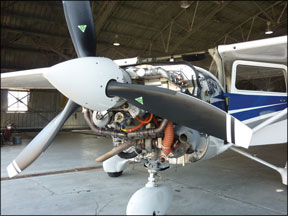
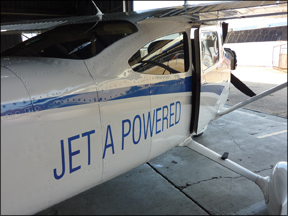
TCM: Early Start
The notion that 100LL would vanish has a long tail, extending back to at least the mid-1980s. But the idea was all tail and no teeth because the aviation industry has been granted recurring exception to the clean air legislation that indirectly began the phase out of leaded mogas.
Continental was an early swimmer against the do-nothing tide. In 1998, it bought a small start-up company called Aerosance (originally Aerotronics) which had developed full authority digital engine controls built around TCM test beds but applicable to any aircraft engine. One driver of that work-if not the main driver-was automotive-style variable timing and pulsed fuel injection that allows high horsepower engines to burn lower octane fuel.
TCM invested enough to certify the system for a number of engine/aircraft combinations but found disinterest in the market. Only one OEM-tiny Liberty Aircraft-offers what has become the TCM PowerLink on new aircraft. There have been a handful of conversions and experimental installations, but fewer than 100 are flying. Nonetheless, TCM says six OEMs have PowerLink launch programs and nine engine families are certified with it. The market may be swinging in TCMs
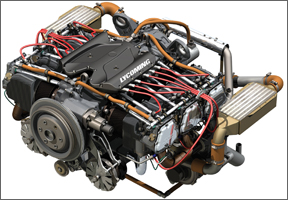
direction.
Bullish as it was on early development of alternate fuels, in 1997 TCM also took a NASA grant under the General Aviation Propulsion project to develop a proof-of-concept diesel. The result was a compact four-cylinder, two-cycle design that ran in the test cell and flew on a Cessna 337 in 2000. But TCM saw that market as soft, too, and declined to move the engine into production. It still has the engine in its research shop.
Fast forward to 2010 and TCM is moving on several fronts. It has a new management team led by Rhett Ross and a new engineering and manufacturing staff. Its pushing hard on the idea that 94UL-a fuel somewhat similar to 100LL without the lead-can serve as a drop-in avgas replacement.
TCM is focusing research on proving that all of its engines can run on 94UL, either with no modifications, through the installation of lower compression pistons, power output limitations, variable timed magnetos or the ready-to-go PowerLink FADEC. TCM has continued to invest in expanding the list of its engines that have a PowerLink version available. When OEMs come asking, TCM wants to be ready.
Heavy Fuel
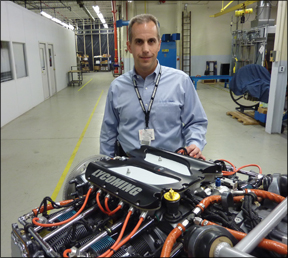
TCM sees the same energy trends everyone else does and knows that overall gasoline demand is flat, 100LL demand is declining and Jet A looks like the global fuel of the future. Still, they surprised us in May by announcing a new diesel project based on technology bought from Frances SMA.
In the test cell and on a Cessna 182, they showed us test articles clearly based on the SR305, a four-cylinder, four-cycle 230-HP engine thats been flying since 1998 but, like Continentals homegrown FADEC, hasnt gained much OEM traction. (See the February 2010 issue of Aviation Consumer for a full report.)
The engines numbers-fuel specifics, power density, cost-make it an in-range drop-in for some of TCMs gasoline engines, but its long-term durability and economics are still unknown. In other words, TCM is taking substantial risk. There’s no license deal with SMA, but rather an intellectual property purchase, meaning TCM can move forward as it sees fit and will do so, planning to develop the high-power six-cylinder powerplants that are the core of the profitable GA market.
That TCM sees urgency in this project was implicit when we asked engineering VP Johnny Doo why the company bought the technology rather than developing it: time to market. Continental thinks demand for heavy fuel piston engines could outstrip its ability to develop them and, as with avgas solutions, it wants to be ready.
Lycoming: A Different View
Lycomings new CEO, Mike Kraft, couldnt see things any differently. An engineer by training, Kraft distills the avgas challenge as a force vector problem bounded by fragile economics with the potential for a sharp downward market spiral if the wrong fuel is chosen. He is plain about one thing: without a unified voice, the industry could default to the wrong choice with an impact in the billions.
Although Continental is willing to make the bet that owners whose engines wont operate on 94UL will either accept
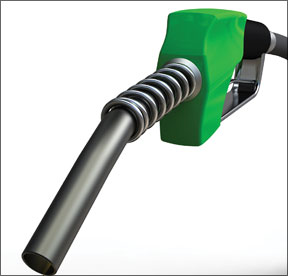
reduced performance or modify them to burn lower octane fuel, Kraft doesnt buy this. While its generally accepted that a small portion of the total fleet-Kraft uses 25 percent-burns most of the avgas (60 percent), whats most important is who those owners are.
Theyre freight haulers, charter operators, small corporate flight ops and the like whose margins are already stretched. If theyre asked to invest in engine modifications and/or sign on to reduced performance just to burn 94UL or something less that 100 octane, Kraft argues that many will simply bolt from aviation.
Some twins, for example, wouldnt meet their original single-engine climb requirements with octane-reduced power limits and would effectively become scrap. It may be a leap of faith to assume these operators will pay anything just to stay in the game. After all, TCM got an unmistakable early market thumbs down on PowerLink.
The larger worry, says Kraft, is the unknown effect this might have on the macro economics of aviation fuel, whose volume has already declined to the point that the oil industry ranks it as a specialty chemical rather than a fuel. If a significant exodus ignites a sharp decline, refiners may decide its not worth the bother and fewer refiners will mean less competition.
The effect on prices will be obvious and could lead to a closed feedback loop of more owner dropouts and yet higher fuel prices, ultimately reducing GA to a high-dollar recreational market for the very rich, with no meaningful commercial component.
Lycomings view is that the only smart solution is an unleaded replacement that has 100 octane or better. Ideally, this would be a drop-in requiring no aircraft or engine mods, something that Lycoming sees as all but a non-starter as a primary solution to 100LLs demise. Interestingly, says Kraft, even
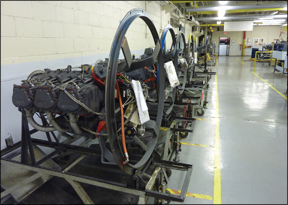
Lycomings new-tech IE2 engine is not being billed as panacea for a low-octane fuel.
“When Lycoming looks at this, its not about the new engine and what we can do, but about the existing market and what the expectations are of getting value out of their assets. You have to be honest. You cant change the laws of physics. You can work the margins of the problem, but a control system around an existing engines is not a panacea for a six to nine octane drop. You can do so much, then youre going to have to de-rate,” Kraft says.
Lycoming believes at least four entities have demonstrated 100-octane fuel, including Swift Fuel and GAMIs G100. To Lycoming, its not whether unleaded 100 octane is possible or whether its a biofuel or a petroleum-based fuel, but rather getting sufficient market attention from end users to first understand the significant impact lower-octane fuels will have and then to stimulate the demand necessary to attract the investment required to develop a 100-octane solution.
Diesel? Not Yet
During our discussions with Kraft, he flashed a slide comparing diesel or heavy fuel engines to gasoline engines. The analysis yielded the same conclusion weve come to on our own: diesels have lower power density than gasoline engines and theyre more expensive to produce. Although theyre more economical than gasoline engines, the large unknown is service history and long-term durability.
Lycoming has pursued heavy fuel engines at least three times in its history: a rotary design with John Deere (dropped), a piston effort with Detroit Diesel (dropped) and a third in-house project, also dropped. The harsh reality is that no aircraft diesel has ever proven an unqualified market success, not the German Jumo, not the Packard radial, not the SMA and certainly not the Thielert line.

Those engines had technical issues and the company went bankrupt, morphing into Centurion. Its unknown if improvements will turn them around.
Further, Lycoming sees trouble in emerging specs for biodiesel that may reduce cetane values for Jet A. (Cetane content describes the ignition reaction speed of heavy fuels. ) There currently are no cetane requirements for Jet A-its present as a happy accident-and if biofuel becomes a player, cetane could drop lower than it already is. Jet A typically has 40 to 50 cetane, while road diesel is higher. If reformulated synthetic Jet A has less cetane-some sources quote figures in the 20s-Lycoming sees the piston industry as the ant and Jet A users as the elephant. Piston GA would have little voice in the fuel spec and because Lycoming doesnt like those odds, its demurring on a heavy fuel engine for now.
Conclusion
Both Lycoming and Continental agree that the demise of 100LL is a more immediate existential threat than aircraft owners and especially groups like AOPA and EAA seem to accept. Thats because those entities don’t have to build and sell products sharply constrained by market expectations on one hand and the laws of physics on the other. And they have to do this in an aviation economy battered to a virtual pulp.
But both companies are placing very different bets on the future. Continental believes that it can develop a range of technical solutions so engines can operate on 94UL and that customers will either buy these solutions or accept reduced performance. Or both. It further believes that heavy fuel is an inevitable future player and is investing accordingly.
While TCM is willing to sacrifice six octane points for a rapid, agreed-upon solution, Lycoming believes a rush to accept 94UL will be a billion-dollar mistake. While it agrees that high horsepower engines might operate on 94UL, it also insists that end users-the ones who will feel the impact-don’t yet understand how seriously performance will be degraded by anything less than 100 octane. Lycoming likes GAMAs idea of transitioning to 100 ultra low lead first, then a lead-free fuel after that.
Whos right? Based on our surveys, we think Lycoming may have the more compelling argument. Weve seen detonation profiles on even 98-octane fuel that leaves us unconvinced that 94UL is really up to the job for a large enough segment of the GA fleet to be a practical choice. In our surveys, an alarming number of owners are telling us theyll get out of aviation rather than modify their engines to run lower octane fuel and it wont take many of them to actually do that to put avgas demand into a worrisome spiral.
As for diesel, both companies are looking at the same numbers and interpreting them differently. Its as clear an example of different business cases as youre likely to see. We see Continentals diesel play as sensible and rational, albeit risky. Lycomings decision to sit diesel out for now has risk, too, but the far larger one is failing to develop an aviation gasoline thats not a drop-in replacement for 100LL. Lycomings clear focus is to make the world of GA understand that without the distraction of adding Jet A to the list.


